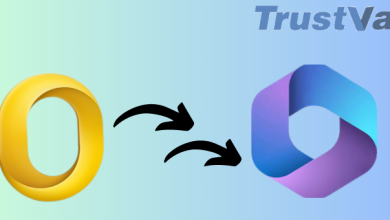What is blockchain: how technology is used to protect copyright

The transition of mass production of content to digital format has caused an increase in demand for intellectual property protection in this segment. Questions remain: how to protect yourself from plagiarism, prevent piracy, confirm the existence of copyrights and the moment of their occurrence. New tools can help here, the most advanced of which is blockchain technology. Despite the many definitions, some find it difficult to understand how the blockchain works, and, in particular, what are the possibilities of its application in the field of intellectual property. What is blockchain technology, how does it help with proof of authorship, and what services can protect intellectual property?
What is blockchain in simple words
Blockchain is an information storage system, similar to a distributed database, which cannot be changed and hacked due to the reliability of the technology itself. The term Blockchain consists of the words block and chain. It turns out that the blockchain is a chain of blocks with a strict sequence. Each block contains a set of data about a transaction, and every time a new transaction occurs on the blockchain, the next block with new data is added to the chain – each next record contains a link to the previous one. Thus, with each committed transaction, the block chain gets longer.
All blocks are linked by a complex cryptographic signature, called a hash – it is created using complex mathematical algorithms, looks like a generator of letters and numbers, contains 1024 characters. After committing a transaction and writing it to a block, all network nodes receive data about it. In simple words, a node is a separate computer that stores the complete and most current copy of the blockchain. Every time a new block appears on the network, all nodes update their blockchain.
The participants in the chain constantly exchange all the data loaded into the common data chain, the transaction history is stored at each participant, which ensures transparency. That is, if hackers decide to damage the blockchain system, they will need gigantic computing resources, but no goal of such an attack will pay off. In addition, the older the block, the more difficult it is to counterfeit, since all blocks after it will have to be re-encrypted. In addition, to make a record, it is necessary to gain control over more than half of the participants in the entire chain for a sufficiently long time. Changes cannot be hidden, since the information of this chain will only be confirmed by those participants who have come under control.
The blockchain is constantly and continuously growing as new transactions are made and blocks are sequentially added to the chain, so the way blockchain technology works greatly improves the security and reliability of the ledger, making it almost invulnerable.
Blockchain technology to protect intellectual property
Initially, blockchain technology was associated only with cryptocurrency. Over time, this method of storing data has found various applications, since the blockchain can contain any digital information about transactions, legal documents, media files, including photos, videos and audio. The blockchain looks like the life cycle of a document or operation. Therefore, the field of intellectual property has become another area of application of the blockchain.
The process of protecting intellectual property using blockchain looks like this: first, a record is created, for example, on the registration of an identifying designation – a trademark, then the block chain grows as any operations are performed with the trademark, for example, it is used in commercial activities , or the license for its use is transferred to another company, or there is a transfer process and other actions. As a result, the full life cycle of a particular object is tracked using the blockchain.
How the authorship and origin of the work is confirmed
In Art. 1257 of the Civil Code of the Russian Federation states that copyright arises by default when the copyright object is created, so there is no need to additionally register the rights to it. But it is necessary to protect the results of creative activity both before and after publication, so that in the event of controversial situations, it would be possible to prove the existing authorship.
Previously, authors sent their work in a single copy to themselves by letter – the date of sending was recorded on the postmark, which was proof of the existence of the document at the time indicated on the stamp. But the method is unreliable, since the envelope could, for example, come unstuck, and then it would not be accepted in court as evidence. Some authors turn to a notary to certify documents, but this is time consuming and expensive.
In the field of intellectual property, the use of blockchain is considered to be the best method for ensuring the protection and confirmation of copyright. The blockchain provides encrypted data storage and is used as part of the provision of the escrow service in n’RIS – this is the ability to place a file and information about it in a digital cell, in the blockchain, and fix the temporary copyright priority of the created works before publication.
Thus, the blockchain records all the information about who owns the rights to the object and how it uses it, if appropriate records are made. For example, if the author has a dispute about who created the unique design of the site, he will be able to instantly receive confirmation of his authorship by providing a certificate that will indicate the date of deposit, a description of the file and information about its owner.
It turns out that a record in the blockchain about the author of the file with a time stamp is a reliable proof of copyright for this object.
The practice of recognizing authorship recorded using blockchain technology
The blockchain already stores information about non-fungible tokens, or NFT is a digital asset representing objects of art, music, video, game items from the real world. Each NFT is unique and exists in a single copy, all information about operations with it is recorded in the blockchain.
For contemporary artists, attaching work to the blockchain as an NFT is a secure and verifiable way to sell their artwork digitally. The blockchain captures data with timestamps for all transactions with an indication of the owner of the rights in the distributed ledger. By looking inside the blockchain transactions, you will get all the information you need about when the NEFT transaction was made, who participated in the transaction, and who owns the copyright.
The value of NFT tokens lies in the fact that data on the acquisition of a unique object of author’s creativity with a unique digital signature is stored in the blockchain. Such a purchase can be compared to the purchase of an original painting – the value of such assets rises due to the destruction of the physical original of the work, because the buyer will have a guarantee that only he owns the object.
IPChain – a platform for interacting with intellectual property objects
The IPChain Association was established in 2017 by the Skolkovo Foundation, the All-Russian Intellectual Property Organization (WIPO), the Higher School of Economics (NRU HSE), the Russian Union of Rights Holders (RSP), the St. Petersburg National Research University of Information Technologies, Mechanics and Optics (ITMO), the Russian Authors’ Society (RAO), the Association of Copyright Holders for the Protection and Management of Copyright in the Sphere of Art (UPRAVIS) and the commercial bank Novy Vek.
The Association “National Coordination Center for Processing Transactions with Intellectual Property Rights and Objects”, or IPChain, uses blockchain technology to store information about intellectual property objects. IPChain brings together the largest organizations that accumulate and produce intellectual property. Among them:
- Association of Film and Television Producers
- Roscosmos
- Rospatent
- Association of Subject Design Specialists (ASPD)
- SITRONICS
- n’RIS
- LitRes
- “Soyuzmultfilm”
- Russian Venture Company (RVC)
- Innovation Promotion Fund
- other
IPChain is also the initiator of the creation of the Committee of the Russian Union of Industrialists and Entrepreneurs (RUIE) on Intellectual Property and Creative Industries.
Using various services, for example, IPEX, IPChain members can quickly enter into transactions with rights and guarantee that any results of creative work are protected. The network was developed for organizations involved in the creation, management, and commercialization of intellectual property.
IPChain allows you to store, verify and exchange information about intellectual property objects, trace their history and understand the current legal status. In addition, IPChain is not a competitor to any of the existing services in the field of intellectual property, but rather, on the contrary, provides infrastructure for all digital services, copyright holders and users who provide legal protection of intellectual property objects or need it.
The main goal of IPChain is to create standards, tools and technologies that will allow participants in the intellectual property rights market to interact with each other in the digital environment.
In June 2021, Vladimir Putin signed a decree on the creation of the Russian Center for the Circulation of Rights to the Results of Creative Activities, which was founded by the Ministry of Digital Development and the IPChain Association. The functions of the Center will include support for connecting corporate and public services and platforms owned by private organizations and companies with state participation to the IPChain infrastructure.
The tasks of the center are the development of services for musicians, scientists, film companies, architectural firms and other representatives of the creative and scientific and technical environment related to the protection of intellectual property, as well as the development of unified approaches to the exchange of information on intellectual property.
Role of nRIS in copyright protection and protection
Today, there are several platforms for copyright protection, one of them is the n’RIS service, which offers the deposit of objects using blockchain technology – the procedure allows you to protect an intellectual property object before it is made public. You transfer a digital copy of the content, for example, a file with script text or a demo recording of a music album, for storage in a secure virtual cell, and information about it is recorded in the IPChain network.
With the help of another technology for the development of means of cryptographic protection of information, CryptoPro, the time and date of creation of the content is recorded, and a unique identifier (file hash) is assigned to the intellectual property object. After that, a certificate of deposit is issued, which indicates a description of the intellectual property object. The encryption key of the electronic cell is also issued, which makes it possible to apply for the necessary information contained in the blockchain one-time.
If it becomes necessary to check the information about the object in the block, it is necessary to perform the hashing operation again. The received cryptographic signature is compared with the one stored in the blockchain. The correspondence of both signatures to each other guarantees the accuracy of the information: this means that a certain data file was entered into the blockchain at a certain time.



